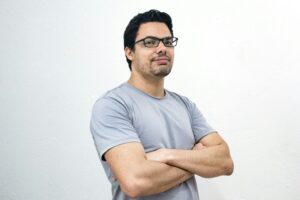Zachary Feinsilver doesn’t just design landscapes—he listens to them. Based in Boca Raton, Florida, he has spent his career shaping outdoor spaces that blend beauty, function, and sustainability.
From residential gardens to urban parks, he believes that landscape architecture should work with the environment, not against it.
“I don’t see landscaping as decoration,” Feinsilver says. “It’s about creating spaces that serve people and the planet at the same time.”
Finding Inspiration in Nature
Growing up in South Florida, Feinsilver was always surrounded by nature. The wetlands, beaches, and tropical forests weren’t just scenery—they were an essential part of life. As a kid, he spent hours exploring the outdoors, fascinated by how plants and animals adapted to their surroundings.
That early curiosity turned into a career. Feinsilver studied Landscape Architecture at Florida Atlantic University, where he learned the science behind designing with nature. He later earned a Master’s in Urban Design and Sustainability from the University of Southern California, where he focused on climate-resilient landscaping and green infrastructure.
“Sustainability isn’t an afterthought—it’s a necessity,” he says. “Every decision we make in a landscape should support long-term environmental health.”
A Career Built on Purpose
Feinsilver’s career has spanned a wide range of projects. As Principal Designer for Coastal Elements Landscaping, he focused on high-end residential landscapes, incorporating native plants and water-efficient systems. Later, as Project Manager for GreenScape Urban Solutions, he worked on revitalizing urban parks, improving stormwater management, and restoring local ecosystems.
Today, as an independent consultant, he works with architects, developers, and municipalities to create spaces that improve both quality of life and environmental resilience. Each project starts with the same questions: How can this space be used better? How can it reduce its impact on the environment? How can it bring people closer to nature?
“The best landscapes don’t feel forced,” Feinsilver explains. “They feel like they’ve always been there.”
Designing With Nature in Mind
One of Feinsilver’s biggest priorities is using native plants. Unlike traditional landscaping, which often relies on water-hungry, non-native species, his designs focus on plants that are already adapted to the local climate. These plants require less maintenance, support wildlife, and help prevent soil erosion.
“We need to stop fighting nature and start working with it,” he says. “Native plants thrive where they belong, and they make landscapes more self-sufficient.”
Another key focus is water management. South Florida experiences both droughts and heavy rains, making smart irrigation essential. Feinsilver incorporates techniques like rain gardens, permeable surfaces, and bioswales to control runoff and reduce water waste.
“Water is one of our most valuable resources, but we treat it like an afterthought,” he says. “A well-designed landscape manages water efficiently instead of letting it go to waste.”
Community and Connection
For Feinsilver, landscape architecture isn’t just about plants and pathways—it’s about people. He believes that public spaces should encourage connection, both between people and their environment. Whether designing an urban park or a backyard garden, he prioritizes accessibility, comfort, and long-term usability.
One of his favorite projects involved transforming an underused city park into a thriving community hub. The space had poor drainage and little appeal, so Feinsilver and his team redesigned it with multi-use areas, native vegetation, and better lighting. Today, the park is filled with families, joggers, and people enjoying the outdoors.
“A public space should feel inviting,” he says. “If people don’t want to spend time there, then it’s not doing its job.”
Lessons From the Field
Feinsilver’s approach to landscape architecture is shaped by years of hands-on experience. One of the biggest lessons he’s learned is that not all green spaces are successful.
“There are plenty of parks and gardens that look great in a rendering but don’t work in real life,” he says. “Good design isn’t just about aesthetics—it’s about function.”
Another lesson? Flexibility is key. No matter how well a project is planned, nature is unpredictable. Weather patterns change, plants grow differently than expected, and people use spaces in unexpected ways.
“I’ve had designs that looked perfect on paper but needed major adjustments after the first year,” he says. “You have to adapt. Nature doesn’t follow blueprints.”
Looking Ahead
As the world faces new environmental challenges, Feinsilver sees landscape architecture as part of the solution. Cities are getting hotter, resources are becoming scarcer, and people are spending less time outdoors. He believes thoughtful landscape design can help reverse these trends.
“I want to see more cities integrating nature into their planning,” he says. “Green infrastructure isn’t just a luxury—it’s a necessity for the future.”
For now, Feinsilver continues to work on projects that align with his values. He’s especially passionate about mentoring the next generation of landscape architects, encouraging them to think beyond traditional design and focus on long-term sustainability.
“The way we design landscapes today will affect the environment for decades,” he says. “We need to get it right.”
A Life Rooted in Nature
When he’s not working, Feinsilver spends as much time outdoors as possible. He enjoys kayaking in the Everglades, hiking local trails, and experimenting with his own home garden. He also travels frequently, drawing inspiration from landscapes around the world—from the structured gardens of Europe to the wild beauty of untouched forests.
“Nature is my biggest teacher,” he says. “Every time I step outside, I learn something new.”
Feinsilver’s philosophy is simple: work with nature, not against it. Whether designing a backyard oasis or a city park, his goal remains the same—to create spaces that feel natural, serve a purpose, and stand the test of time.
Read more:
Zachary Feinsilver: Designing Spaces That Work With Nature

